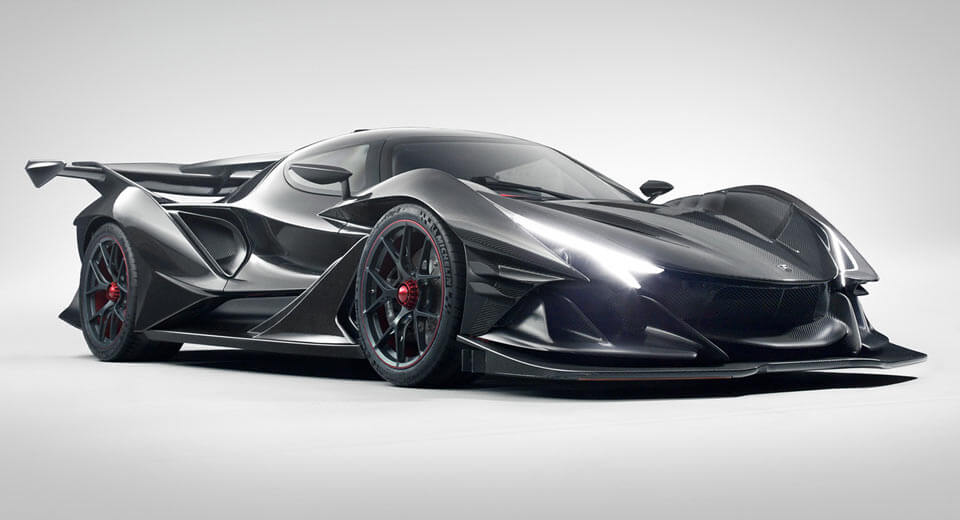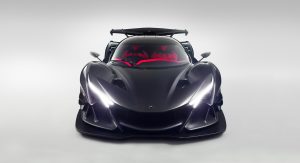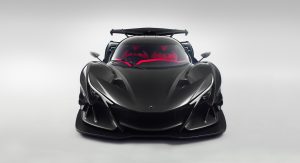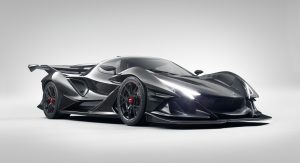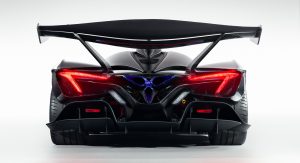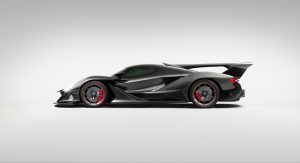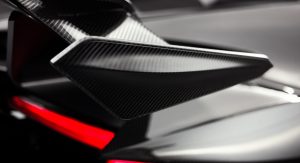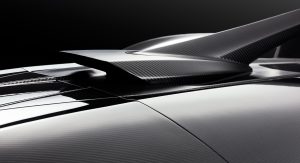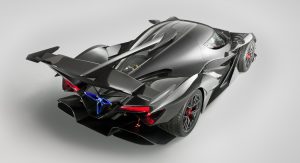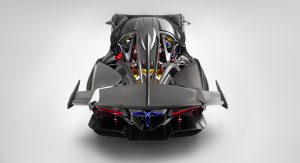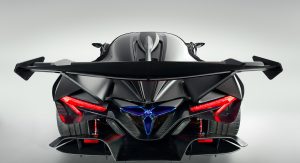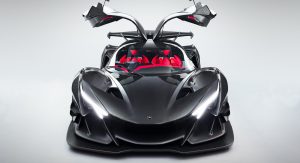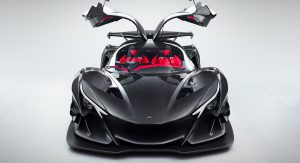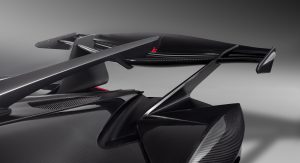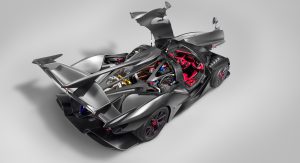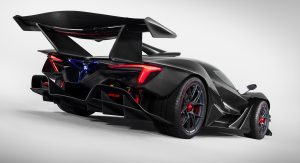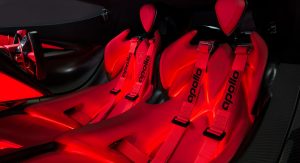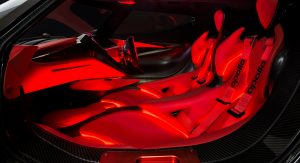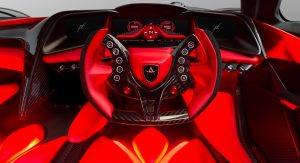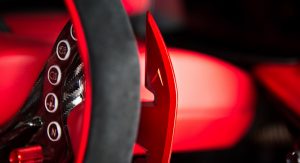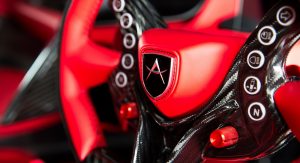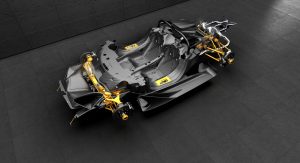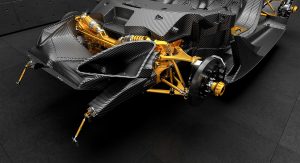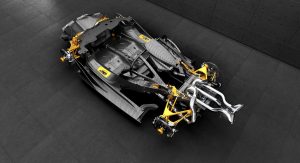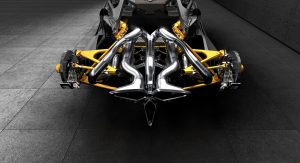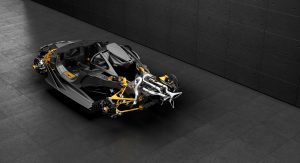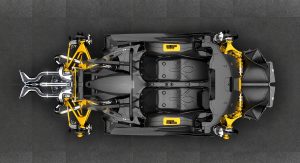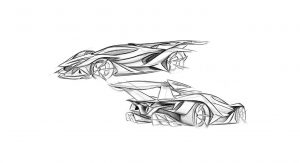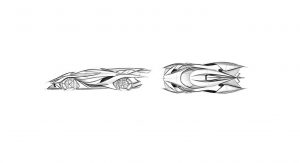Apollo is back with an entirely new product that debuted today under the Intensa Emozione moniker, or IE for short.
It’s aimed at enthusiasts with deep pockets who would rather go for a modern supercar with a naturally aspirated V12 engine, rather than some of the eco-friendly machines currently available on the market, or in development.
At its heart lies a 6.3-liter naturally aspirated V12 engine that feeds 780PS (769hp) and 760Nm (561lb-ft) of torque to the wheels, through a sequential 6-speed gearbox, with steering wheel-mounted paddle shifters.
The new Apollo IE has a curb weight of just 1,250kg (2,756lbs) and takes 2.7sec to reach 100km/h (62mph) , from a standstill, before topping out at 335km/h (208mph). Beneath the skin, it features a carbon fiber monocoque with crash boxes, race car-inspired suspension, and carbon ceramic brakes made by Brembo.
On the outside, the supercar benefits from advanced aerodynamics, all wrapped under a design that can only be described as aggressive. It has plenty of muscular and soft lines that run across its body, a giant front splitter, wide front and rear fenders, large air intakes, a massive wing at the rear, and a central-mounted exhaust, incorporated into the bumper.
A similar design is being continued inside as well, where the Apollo Intensa Emozione features sharp lines that run across the dashboard, red upholstery, ambient LED lights, carbon fiber trim, quick-release steering wheel, and a six-point racing harness. It also gets a 12-inch high-resolution display, a 5-inch roof-mounted display to control the heating, ventilation, AC, defrost, date and time, and ambient lighting, and a digital instrument cluster.
Moreover, each future owner will be measured to have a bespoke seat made especially for them. The seats are carbon fiber shells, attached directly to the tub, with the steering wheel and pedals moving forward and backward, but for an additional cost, the automaker can throw in standard racing seats.
Apollo will only make 10 units of the Intensa Emozione, with each one costing upwards of €2.3 million ($2.7 million). Paying the sticker price means that you’ll be able to assist in its development, compete in the Time Attack program “on the most relevant European racing circuits”, and get insights about future products.



